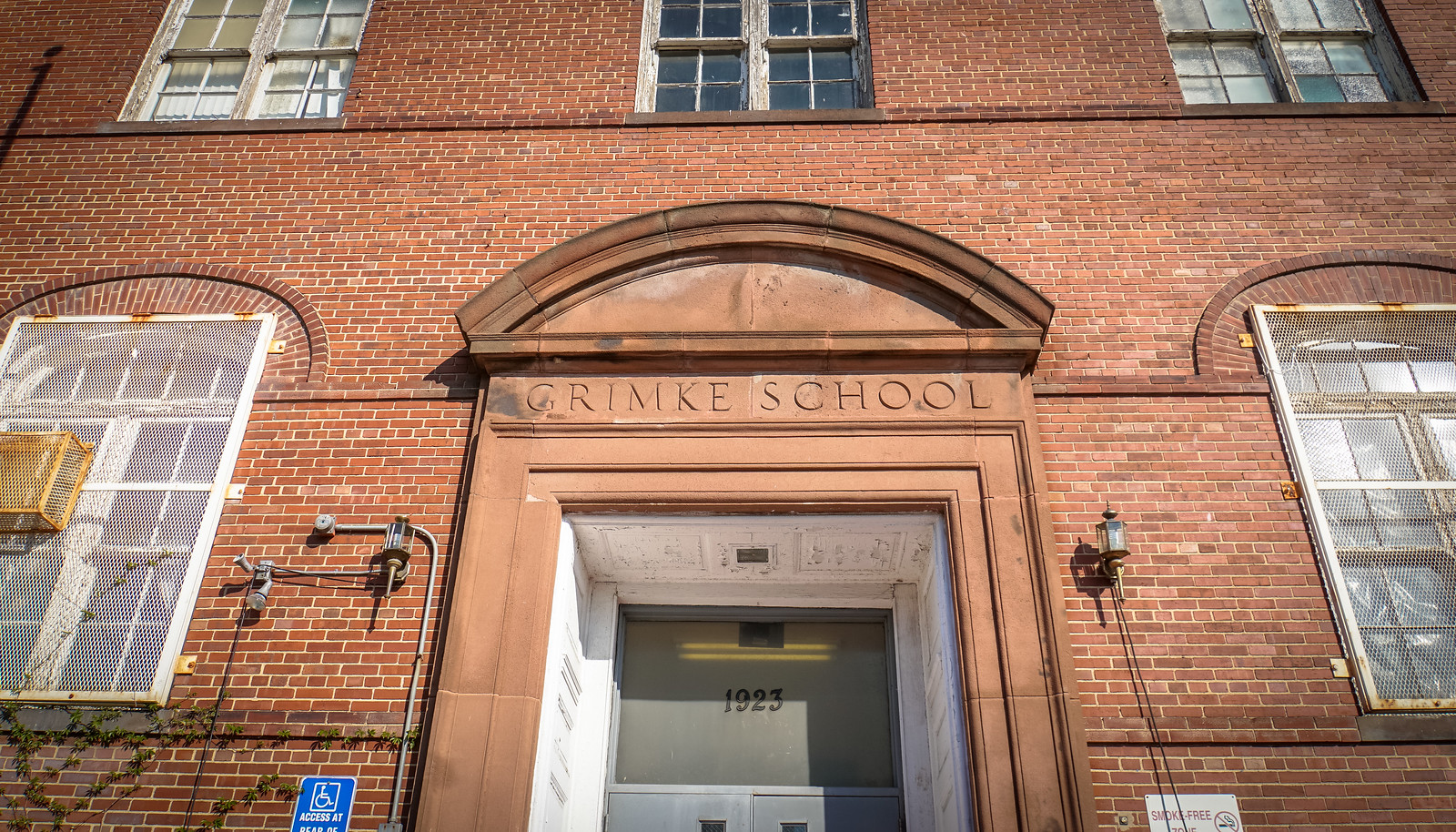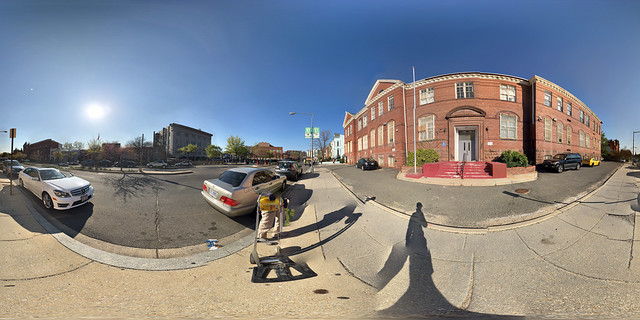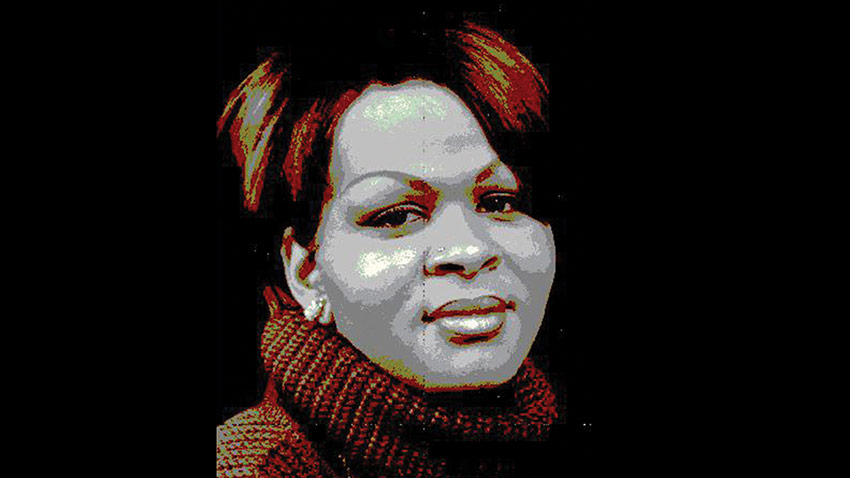
Grimke School, 1923 Vermont Avenue, now sits abandoned, in the shadow of the African American Civil War Memorial, and next to the African American Civil War Museum. It’s about to get redeveloped, so won’t look like this for much longer.

Here’s a virtual reality view. Click through to flickr to see it as a sphere.
The school served many purposes during its history, and in one of its last (maybe the last?) incarnation it was a flashpoint in changing the trajectory of LGBTQ rights.
In 1995, it housed the D.C. Fire Department, who were found responsible, along with an emergency room physician, for the death of Washington, DC resident Tyra Hunter, age 24, on August 7, 1995.
As is recounted by Gay Men & Lesbians Opposing Violence (GLOV) in GLOV: Homophobia in the D.C. Fire Department
The circumstances surrounding Hunter’s death sparked widespread fear in the LGBT community that its members might be mistreated and harassed by the very institution responsible for rendering them emergency medical assistance. Injured in an automobile accident, Hunter died shortly after a firefighter stopped treating her when the firefighter realized that Hunter was a man dressed in women’s clothes. Rather than assisting Hunter as she lay dying, the firefighter harassed her by making homophobic jokes to his fellow firefighters.
A month later, on September 7, Grimke School was the site of a candle-light vigil and protest
More than 100 people gathered in a candlelight vigil Wednesday night in front of D.C. fire department headquarters to protest the department’s handling of an August traffic accident that resulted in the death of a man dressed as a woman.
Several groups representing gay men and lesbians, including Gay Men and Lesbians Opposing Violence and the DC Coalition of Black Lesbians, Gay Men and Bisexuals, demonstrated outside the headquarters at 1900 Vermont Ave. NW with chants and speeches to protest the department’s treatment of Tyrone Michael Hunter, 24, who was fatally injured Aug. 7 in a car accident.
The headline from this Washington Post Story tells the story of what happened next:
Scott Bowles, Washington Post, Staff Writer. (1995, Dec 10). A death robbed of dignity mobilizes a community. The Washington Post (1974-Current File) (Current DC Library card required to access article)
Although no criminal investigation was completed in regards to the practices and malpractice of the physicians involved, a wrongful death suit was filed and Washington, DC ordered to pay damages:
MARIA ELENA FERNANDEZ, Washington Post, Staff Writer. (1998, Dec 12). Death suit costs city $2.9 million. The Washington Post (1974-Current File) (Current DC Library card required to access article)
The incident and the case drew international attention. I can imagine that as it took courage to protest in 1941 in an era of disempowerment for African Americans, the same was most certainly true for transgender Americans and the LGBTQ community in general in 1995.
A change in the posture of Washington, DC government toward transgender people happened after Tyra’s death and the judgement against it.
The District of Columbia passed comprehensive transgender inclusive anti discrimination protections with amendments to the Human Rights Act of 1977, in 2006.
This year, just two weeks ago, another piece of legislation was passed by DC City Council and enacted into law by the U.S. Congress, requiring cultural competency training for all physicians licensed in DC: Without Anyone Noticing, D.C. Passed a Remarkable LGBT Bill | Advocate.com
Today, Washington, DC stands as one of the most, if not the most, protective in policy of LGBTQ human beings in the United States.
Something also changed in the courtroom in 1998 as well. Even though Margie Hunter had to endure references to Tyra during the trial as a “man dressed as a woman,” and the exclusive use of Tyra’s birth name, the jury saw the future:
“The Jury looked at all the facts and recognized that Tyra was not a man dressed as a female but a human being,” said Earline Budd a transgendered (sic) activist who watched most of the trial.
The killing of people who are transgender continues to this day, as well as mistreatment in the health system. However, the state of respect for LGBTQ humans in 1995 in the DC General emergency room is unfathomable to me. And yet it happened. I saw it in my own medical training 2000 miles away.
Thanks to the people across generations who came to Vermont Avenue to make sure the world learns to love better. They came to make sure that no mother of a child goes through this:
“You know what I really wonder about?” she (Margie Hunter, Tyra’s mother) asked. “Whether he could hear what they said about him. Or hear them laughing. He was conscious for a while, you know. I wonder if he heard them laughing and just gave up. Sometimes, it’s hard not to.”
The generation of physicians who trained during this era are here to make sure as well, here, in the 21st Century, on Vermont Avenue and beyond….
Note: Taking a little diversion into Washington, DC (one of the three foci of this blog) and specifically Vermont Avenue over the next week.
Next: Vermont Avenue, Then and Now
If you live in Washington, DC and want to be a part of this history, please join us this weekend as we plant Vermont Avenue, Northwest.
Formerly the Phelps School, an 8-room building was erected on this site in 1887, and served as the Business Department of M Street High School from 1912 to 1916. From 1924 to 1925, it was renamed Phelps Colored Vocational School, and in 1934, it became Grimke Elementary. Additions were made to the building in 1937. Typical of the brick schools built in D.C. in the 1880s and 1890s, this school is distinguished by its handsome rusticated stone base. The building is used today by the D.C. Fire Department and the D.C. Department of Corrections. The school was named for Archibald H. Grimké, a lawyer, biographer, and US consul to Santo Domingo. (Via Humanities Council of Washington, DC)

 Source:
Source: